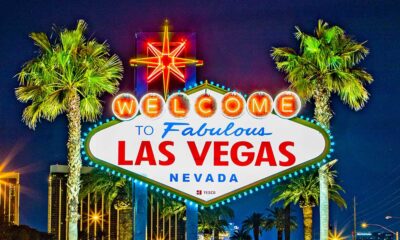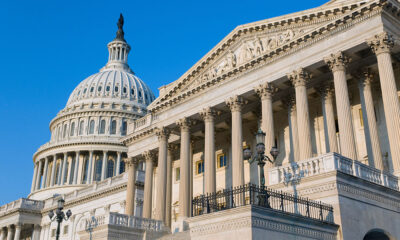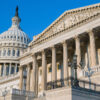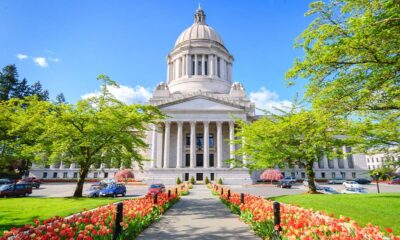
Politics
Everything You Need to Know About Canada’s Cannabis Legalization
Here are answers to some of the frequently asked questions about the new cannabis laws in Canada.
This morning, legal cannabis finally becomes a reality in Canada, as the Cannabis Act has finally taken effect.
However, a policy patchwork across the country’s provinces and ongoing political tussles have left many confused as to what Canada’s new legal cannabis system will actually look like. We break down some of the frequently asked questions.
Who Can Legally Smoke Cannabis in Canada Now?
Canada’s Cannabis Act allows those 18 and older to purchase cannabis, either online or from retail stores. However, all the provinces except Quebec and Alberta have raised the minimum age to 19, to conform with the drinking age. (In the U.S., states that have legalized cannabis have an age limit of 21, also matching the drinking age.)
How Much Cannabis Can Adults Possess in Canada?
The federal law sets a 30-gram limit for sales or for possession in public. That’s just over an ounce, which is the possession limit in all but one of the U.S. states that have legalized. (In Maine, the limit is 2.5 ounces, or 71 grams). The law sets no limit on residential possession, although some of the provinces have imposed such limits. The limit for residential possession in British Columbia is set at one kilogram. (These rules also only apply to non-medical cannabis, with medical marijuana under a separate system.)
Can You Grow Cannabis at Home?
The Canadian law also allows for home cultivation of up to four plants. However, two provinces — Quebec and Manitoba — have opted to forbid home-grown. (U.S. states including California, Nevada, Alaska and Colorado allow home cultivation of up to six plants.)
Where Can You Smoke Cannabis in Canada?
That’s another tricky question. As has been noted, Quebec’s regulatory legislation would allow people to smoke cannabis in most places where cigarettes are allowed. However, in neighboring Ontario, the provincial law bans consumption in public. So theoretically, Ottawa residents could head to Gatineau, the adjacent town in Quebec, buy cannabis and walk back home smoking it — as long as they stopped halfway across the interprovincial bridge and either finished off their joint or tossed it into the Ottawa River (which would certainly be a waste).
However, many Quebec municipalities, including Montreal, have in fact opted to ban public smoking of cannabis. Gatineau is considering such an ordinance, although it hasn’t passed yet.
A similar situation is playing itself out in Alberta, with the cities of Jasper and Banff opting for more strict regulations. British Columbia is instating a similar regulatory regime.
Where Will Cannabis Be Available in Canada?
That depends on which province you are in. Canada’s 10 provinces and three territories have each implemented their own regulations, as allowed by the federal Cannabis Act, creating a policy patchwork.
In some provinces, private retail outlets will be permitted. Alberta has adopted a free-wheeling model, with an unlimited number of private dispensaries — but it seems those actually ready to open now will be clustered around Edmonton, the provincial capital.
Saskatchewan will also allow private outlets, but has imposed a province-wide limit of 51 retail permits. At least four but probably no more than 10 will open on Oct. 17.
Other provinces, including Quebec, Nova Scotia and Prince Edward Island, have opted for a model of only government-operated retail cannabis outlets — akin to Canada’s government-run liquor stores. The newly established Société Québécoise de Cannabis (SQDC) says the plan is to open 20 storefronts “gradually” once legalization takes effect. The SQDC says 14 of these will likely be ready to open on Oct. 17, mostly in Montreal and Quebec City.
Ontario has recently flipped on this question. Initially, the province opted for a government monopoly on all retail sales. But Ontario’s administration, under the confusingly named Progressive Conservative Party (actually more conservative than progressive), announced in mid-August that it will allow recreational cannabis to be sold in private retail stores while the provincial government will handle online sales. The provincial Ontario Cannabis Store will not operate any storefronts, but will sell through its website — which will include an age-verification system “to ensure safe home delivery of cannabis products.” But things are promising to move slowly. Premier Doug Ford says the first retail outlets will not open before April 2019.
Things are also moving slowly in British Columbia. The one government retail outlet in all of the province as cannabis goes legal this month will be in the interior city of Kamloops — not even cosmopolitan Vancouver. And the old dispensaries that have been operating in a legal “grey zone” (as it is often called) may not be an option.
What About Canada’s Old Dispensaries? Will They Be Raided?
That is the big-ticket question. Especially because legal retail outlets are coming online so slowly, a black market is likely to persist for a while, at the very least. And this could mean continued harsh enforcement efforts, and even rising arrests, after “legalization.” A tolerant approach to the “grey market” dispensaries established for the medical market could be the way out of this dilemma, if only for a transitional period.
But will authorities be so enlightened? It remains to be seen, and there have been some ominous signs. September saw a police raid on a Vancouver “harm reduction center” that was offering cannabis products. Recent months have seen a string of such raids in Toronto.
Just last week, provincial police raided eight dispensaries across Quebec, making one arrest at each. All the detained citizens have been charged with possession and trafficking. The Vancouver Sun reported on Oct. 14 that British Columbia dispensaries were racing to purge their stock of “grey-market” cannabis before legalization takes effect, in hopes of getting approved to stay in business under the regulated market.
If there is a general crackdown on the “grey market” outlets before the licensed ones are widely operating, Canadians could be faced with the perverse reality of cannabis becoming less available with “legalization.”
What About People in Prison for Cannabis Offenses?
On Tuesday, Oct. 16, federal officials announced that they would be allowing Canadians arrested for simple marijuana possession to apply for a pardon. For months, the administration of Prime Minister Justin Trudeau has been asserting that they would not grant amnesty to people in jail for cannabis crimes until after the federal government’s legalization framework is in place. Now that the system is in place, officials said they would not be retroactively clearing people’s records, but that they would be releasing an application for individuals to apply for pardons themselves.
False rumors about expungement in Canada have frequently made waves on the internet. In 2016, when Trudeau’s administration was just beginning to prepare the drafting of the Cannabis Act, a Facebook meme proliferated claiming that he had “freed from prison and expunged the records of every marijuana user in his country.” The rumor-busters as Snopes shot it down.
How Does Canada’s New Cannabis Law Affect the First Nations?
Yet another tricky question. The Cannabis Act doesn’t mention First Nations — only the provincial governments. And the Indian Act, the primary Canadian law governing the country’s indigenous peoples, doesn’t mention cannabis — only alcohol. So the status of Canada’s some 600 First Nations in the new cannabis order is a legal ambiguity.
Some band councils are aggressively embracing retail outlets and cultivation facilities on the reserves. Others are banning the stuff outright. Both are claiming a sovereign right to do so, no matter what Canadian law has to say. So far, the federal government is taking a hands-off approach.
So sales on indigenous reserves could also help take up the slack while the licensed retail outlets are waiting to come online.
How Much Money Is Canada’s Government Expecting to Make from Legal Cannabis Sales?
A lot. The Canadian Imperial Bank of Commerce (CIBC) stated earlier this year: “We believe that by 2020, the legal market for adult-use cannabis will approach $6.5 billion in retail sales. For context, this is greater than the amount of spirits sold in this country, and approaches wine in scale.”
CIBC economist Avery Shenfeld wrote, somewhat ominously: “The bottom line is that federal [and] provincial governments might reap as much as $5 billion from legalization, but only if all the underground sales are effectively curtailed.”
The federal government is saying all revenues from legal cannabis will go into public health.
Who Is Going To Be Cultivating Canada’s Cannabis?
The Licensed Producers created for Canada’s medical marijuana system are now poised to dominate the recreational market. Leaders include Ontario-based Canopy Growth (the first “plant-touching” cannabis company to list on the New York Stock Exchange) and Aphria Inc, and Alberta-based Aurora Cannabis.
However, the Licensed Producers have been surrounded in controversy since the government mandated that they were the only legal cultivating businesses in the country, as these large-scale producers lock smaller cultivators out of the cannabis industry.
TELL US, do you support Canada’s federal cannabis regulations? Is there anything you think should change?


























